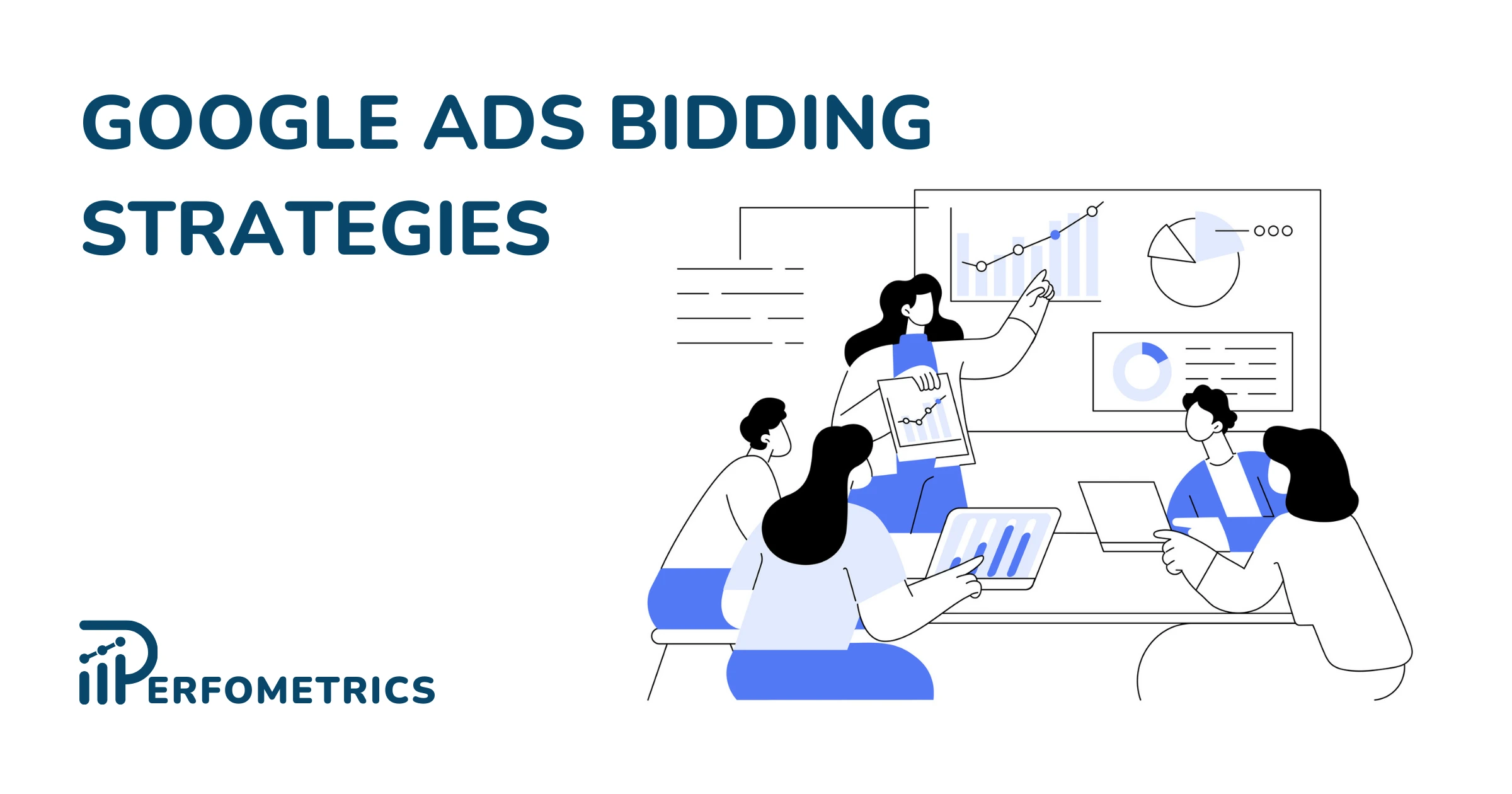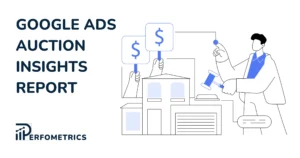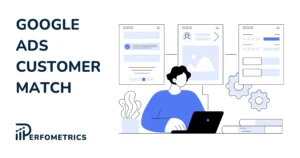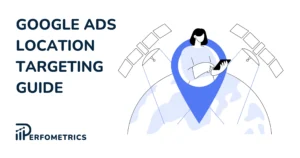Different Bidding Strategies in Google Ads [2024 Edition]

There are many different bid strategies in Google Ads and sometimes it can be overwhelming when choosing the right one for your campaigns and best fit your marketing objectives. We will focus mainly on bidding strategies in Google Ads offers as it tends to be the most developed platform and the most used one. We will present the pros and cons of each one and hopefully guide you to making the right decision.
💡 For more, read: common Google Ads mistakes.
Manual Bidding Strategies in Google Ads
Manual CPC & Enhanced CPC (eCPC)
Unlike the other bidding strategies in Google ads, this strategy can be found across all advertising platforms. With this manual strategy, you have full control over everything in your campaign. You are the main decision-maker here, you decide what the desired CPC (cost per click) should be.
Advantages of Using eCPC
- As a campaign manager, with this strategy, you have the most control over the campaigns. You can easily limit when the performance is bad and also boost swiftly when the performance is good.
- Unlike other automated strategies, eCPC (also Max Clicks) takes into account every bid adjustment on devices, locations, ad schedules, audiences, and demographics.
- The eCPC strategy still puts focus on generating conversion which you can define when setting it up or later on in the settings.
- (Advanced) This is only specific to Google Ads and is still in beta, but it’s a feature that appears when looking at longer timeframes. You may notice that certain data numbers are in blue and underlined and when hovering above it with your mouse you can then see potential explanations for the change that has occurred.
Disadvantages of Using eCPC
- It’s quite time-consuming. Managing campaigns with eCPC will require your full attention and time. This can be made easier by using Google Ads Editor or making your adjustments on a more global level.
- The actual CPC may vary, it may increase and decrease. When looking on a weekly bases, the overall CPC should be within the defined one. If you are looking to have super strict control over the CPC you may be better off opting for the Manual CPC strategy.
- You are missing out on other signals that Google uses as inputs for their algorithms behind the other automated strategies which can help in successfully achieving the campaign’s goal.
- Google constantly suggests switching to an automated strategy, especially if you are tracking conversions (Included in the conversions column) in the campaign. This will impact your Optimization Score and indirectly impact and limit the overall performance of your campaign.
For additional details, please check out Google’s official documentation for eCPC strategy.
Automated Bidding Strategies in Google Ads
Maximize Clicks (Max Clicks) in Google Ads
The name of this strategy is quite self-explanatory. Its main objective is to generate as many clicks (in other words traffic) as possible under a max CPC that you can define in the settings of the campaign.
Advantages of Using Max Clicks
- It takes away a lot of the pressure to constantly monitor the performance, like in the case of eCPC, as this strategy is semi-automatic.
- It’s a great strategy for your Brand campaign when you are absolutely certain about the keywords you would like to target.
- It’s a great way to test out the grounds quickly and generate a lot of volumes.
- It still gives you control over the max CPC you would like to pay.
- Just like the eCPC strategy, all bid adjustments on device, location, and ad schedule are taken into account
Disadvantages of Using Max Clicks
- There is no micro-management on the keyword level. You can limit the max CPC on the campaign level, you don’t have control over every single keyword.
- This strategy doesn’t allow you to focus on generating conversions. You can still track them, yes, but the strategy won’t try to optimize to bring as many conversions as possible.
- Just like eCPC, because you are not optimizing for conversions, as long as you track conversions in the campaign Google will push you to switch to a fully automated strategy focused on conversions. This will leave your Optimization Score always limited and this can have an impact on your campaign’s performance.
To find out more about the Max Clics strategy in Google ads check out Google’s official documentation.
Target Impression Share (tIS) in Google Ads
Target Impression Share is quite an aggressive strategy and is mostly recommended for brand campaigns. This is one of the few fully automated bidding strategies. With this strategy, you target how many times and in what position you want your ads to show out of all the possible search queries. So your option is to target the percentage of times your ads show, but also where you would them to appear. This can range from anywhere in the Search Engine Result Page, also known as SERP (Impression Share), in the top 3 results (Top Impression Share), or if you want your ad to be the very first one (Absolute Top Impression share).
Advantages of Using Target Impression Share
- If it’s really important for your ads to show on the top or even first, this is the way to do it.
- It’s a great way to show up to customers and introduce your business to them. Build brand awareness and brand consideration down the road.
Disadvantages of Using Target Impression Share
- You will spend a lot of money. Of course, this depends on the industry you’re in and also the position you are trying to target.
- There are no optimizations for conversions, not even for clicks. The objective is quite simple, show the ads as often and as high as possible within the defined objectives.
- There’s no option to control the CPC and practically none of the bid adjustments are taken into account (except for devices when put at -100% bid adjustment).
- There will be a learning period that typically lasts 7 days before the campaign stabilizes and achieves optimal performance.
For additional information, check Google’s official documentation for the target impression share strategy.
Smart Bidding Strategies in Google Ads
Maximize Conversions (Max Conversions) in Google Ads
This is finally a fully automated strategy. Here you will have to define what conversions you would like the campaign to optimize for and it will do everything in its capabilities to deliver the maximum amount of conversion within the given budget.
Advantages of Using Max Conversions
- This is a great strategy to start generating conversions and teaching the algorithm what the conversions are, what it takes for a customer to convert, what types of customers convert the most etc.
- If you don’t have a target cost per conversion that you are aiming for, and your focus is to generate volume then this strategy is a great fit for it.
Disadvantages of using Max Conversions
- You lose practically all of the control. There’s no option to control the CPC, and almost none of the bid adjustments are taken into account (except for the device when put at -100%).
- It will spend a lot, and most probably you will end up with a “Limited by Budget” warning because this campaign strategy really focuses on volume and doesn’t put much importance on being smart with the budget.
- Just like any fully automated strategy, there will be a learning period that typically lasts 7 days before the campaign stabilizes and achieves optimal performance.
To find out more about Max Conversions, check Google’s official documentation.
Target Cost Per Action (CPA) in Google Ads
Google Ads Target CPA is a fully automated bidding strategy that focuses on generating as many conversions as possible under the target CPA that you define. It’s very important to give this strategy the correct conversions to optimize for, the appropriate budget, and sufficient search volume.
Advantages of Using Target CPA
- Unlike the Max Conversions strategy, if you have a defined CPA you would like to aim for then this strategy is the way to go.
- It’s one of the most powerful algorithms Google has up until now. When set up properly, it simply delivers, it can achieve wonderful things.
Disadvantages of Using Target CPA
- There is no control, except for the target CPA that you can define. For everything else Google is responsible.
- It is a hungry strategy. It requires a lot of data, so the moment the budget is too restricted, the keywords are too limited, or the target CPA is too low then the campaign will always have a “Limited” status which negatively impacts the performance.
- Just like any fully automated strategy, there will be a learning period that typically lasts 7 days before the campaigns are fully up and running.
To learn more about target CPA, we recommend visiting Google’s official documentation. And check out also our detailed article on how to best optimize the Target CPA strategy.
Maximize Conversion Value (Max Conversion Value) & Target Return on Ad Spend (Target ROAS) in Google Ads
These two are quite similar to their previous counterparts, but instead of only focusing on the number of conversions, they focus on the value of each conversion. These are best used for e-commerce businesses or other businesses where the value of each conversion is known. This doesn’t exclude completely the other services based on B2B businesses. Here’s our in-depth article on everything you need to know about target ROAS in Google Ads.
Advantages of using Max Conversion Value & Target ROAS
- These strategies focus on generating value rather than just the volume of conversions. A difference is that the Max Conversions Value won’t have any limits on how much it can spend per conversion value, while the target ROAS main objective is usually profitability. Generating more sales or value than you are spending on the campaigns.
- They are both very powerful strategies and when everything is set up well they perform extremely well.
- For generating sales, these strategies will help you the most out of any other, that’s basically what they are meant for.
Disadvantages of Using Max Conversion Value & Target ROAS
- There is still no control. In target ROAS you will be able to set a target return on investment, but other than that the rest is up to Google.
- They require a lot of data to run properly and it’s important not to limit the campaigns too much because that can negatively impact their performance.
- Again, there will be learning periods that typically last around 7 days.
Lastly, check out Google’s official documentation on Max Conversion Value, and tROAS bidding strategy.
Summary & Tips About Bid Strategies in Google Ads
- Before choosing your strategy, it is very important to understand what is your business and the core objectives you aim to achieve. Different bidding strategies fit different company profiles and targets.
- Be patient with the campaign, some of the more complex automated strategies will take a bit longer until they find their sweet spot and deliver optimal performance. Event the eCPC or fully manual strategy will require a few days of active running until there is enough data for further decisions to be made.
- Test and try different strategies, even when they are running super well. It is natural to want to change when things are going bad, but try to see if you can test out different bidding strategies and improve even further the performance when the numbers are good.
- Try as much as possible to make your decisions based on data. Somedays you’ll feel urges and emotions to take an action just because you saw good or bad numbers. But check the data first before taking the step.
- There will be days with bad performance, don’t panic when you don’t like the numbers. Take your time to analyze it, and check different metrics and signals. At the end of the day, the bad performance could be related to a simple bank holiday in the region you’re targeting.
- Be careful with the short-term timeframe analysis. Checking the data day by day is okay, but don’t get caught in it. It’s also important to take a step back, pick a longer time frame, and analyze the evolution. An easy way to do it is by creating a simple report that will keep a constant timeframe of the last 30 days.
- Keep an eye on the Optimization Score and Recommendations. Keeping the score as high as possible will contribute to keeping your bidding strategy optimized and healthy. Check out our article on how to maintain a high optimization score in Google Ads.



